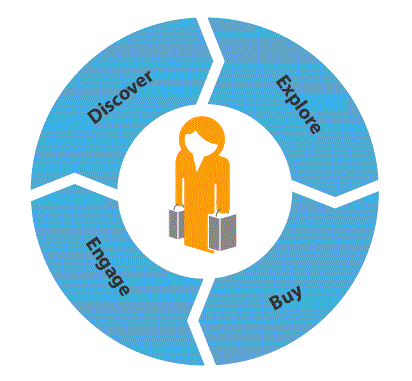Bye, Bye Marketing Funnel — It Was Fun While It Lasted
Dear marketing funnel,
It’s over. We had a good run together, but let’s face it: We’re just not good for each other anymore. And I’ll be honest; it’s you, not me. You’re just too linear, and you don’t prioritize the people that matter to me or care about the activities that I know will make me more efficient and relevant. After decades of good-enough, I’ve found someone who puts people first and recognizes how important it is to get to know them, putting loyalty over one-time encounters. I’ve found my soul mate of the future, and I’m going all in.
I’m sorry, but I’m better than this.
Fondly,
Chief marketing officer
Yep, it’s true folks — the chief marketing officer’s long-running love affair with the marketing funnel has come to an end. But put away your tissues because the CMO’s new love interest is a major upgrade. Meet the customer life cycle, which we reintroduced today in a new report, “Embed The Customer Life Cycle Across Marketing.”

The research reveals that the marketing funnel no longer applies to modern marketing, with its fragmented paths to purchase and a strategic imperative to place the customer at the heart of everything a business does. The customer life cycle, defined as the “customers’ relationship with a brand as they continue to discover new needs, explore their options, make purchases, and engage with the product or service experience,” is the right approach because:
- The customer is at the center. By putting your customer at the center of marketing, priorities and budgets will change to singularly respond to customer needs. Each phase in the life cycle is about what the customer does, not what marketing seeks to achieve. Better data will propel brands forward when it comes to creating customer-obsessed marketing programs and meeting customer needs in the right location (physical and channel) with the right content at the right time.
- It considers the complete brand experience. The life cycle encompasses the full scope of the brand experience — from earned media to the in-store experience and the website — and therefore encourages marketers to go beyond traditional activities and sales numbers and instead focus on that whole experience, particularly customer satisfaction and engagement. Digital tools vastly expand the marketer’s arsenal for creating these superior experiences, and consumers expect a high level of interaction
- A purchase does not always (or even often) equate to loyalty. Today’s smart marketers understand that a transaction isn’t an automatic recipe for positive word of mouth or a repeat sale. Instead, loyalty is something that has to be earned and nurtured on an ongoing basis. The life cycle emphasizes that goodwill must be built up and continually delivered on to build successful — and profitable — long-term relationships.
Check out the report for a further explanation of why the funnel is outdated, for access to new data about consumer behavior in each phase of the life cycle, and for recommendations to get your company on board with the customer life cycle (CLC).
This report is the first of a stream of research around the CLC. So let us know your thoughts, and help us shape future content for this topic. And thanks!